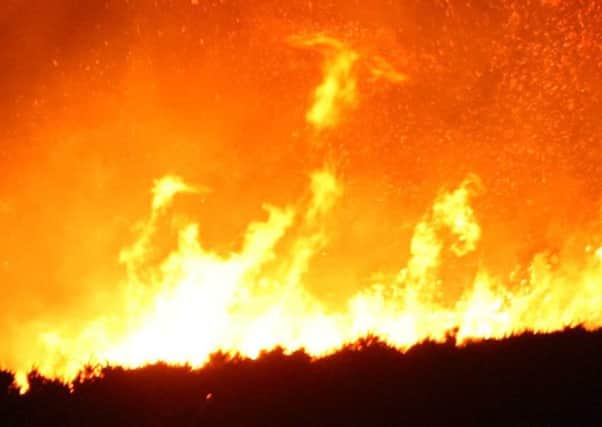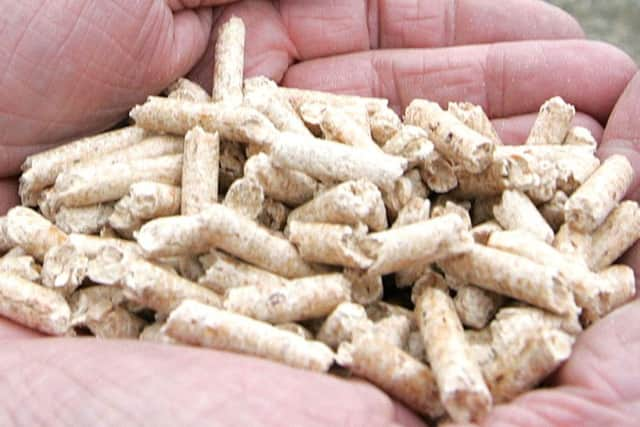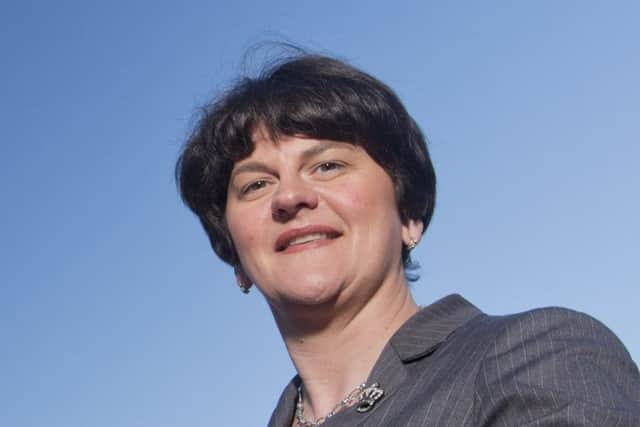Burning money: the RHI scandal explained


HOW IT WAS SET UP:
The Northern Ireland government had aimed to have 4% of the Province’s heat generated by renewable sources by 2015.
The aim was to grow this to 10% by 2020.


In order to help meet these targets, two types of Renewable Heat Incentive schemes were introduced by Arlene Foster’s Department for Enterprise Trade and Investment (DETI).
Advertisement
Hide AdAdvertisement
Hide AdOne was called the “non-domestic” RHI scheme (introduced in November 2012 for businesses), and the other was the “domestic” RHI scheme (introduced in December 2014 for households).
The “non-domestic” scheme is a far bigger problem, because it will cost much more to run (see bottom of the article).
Both schemes were shut to new applicants from February this year after a surge in demand.


RHI works by paying out a subsidy based on every kilowatt of heat energy produced by renewable technologies.
Advertisement
Hide AdAdvertisement
Hide AdThe most popular means of generating heat is via “biomass” (ie; wood pellet) boilers.
In Northern Ireland, RHI is administered by Ofgem (Great Britain’s official energy regulator), on behalf of DETI.
Applicants first had to install a boiler, then get it approved by Ofgem.


If an application for RHI was then successful, they would get subsidies four times a year to run it.
These would increase along with inflation.
Advertisement
Hide AdAdvertisement
Hide AdOnce applicants are accepted on to the system, subsidies can continue for 20 years, so the last payments to be made in the scheme are expected to be in 2036.
NONSENSE NUMBERS:


However, the Northern Irish scheme was set up so poorly that it directly incited people to waste fuel.
According to an audit report in summer this year, at the outset in 2012 the rate of subsidy was 5.9p per kilowatt of heat produced (for non-domestic biomass boilers of up to 100kw).
But the cost of the fuel required to generate this was 4.39p.
The result?
Advertisement
Hide AdAdvertisement
Hide AdThat people could make 1.51p per kilowatt of heat energy they generated – and the more fuel they burned, the more money they could earn (although the terms-and-conditions of the scheme actually state that people are not supposed to burn fuel just to increase their payments).
Despite the already-high rate of subsidy in 2012, the amount continued to grow, reaching 6.4p by 2015 – whilst, at the same time, the rate of subsidy was dropping in mainland UK.
Nonsensically, an audit report in 2016 found that when DETI made its case for the RHI scheme to Stormont’s finance department in 2012, it had said “the rate proposed was lower than the cost of fuel and therefore there would be no incentive to abuse the system”.
However, it had also included the figures above, which showed the exact opposite.
Advertisement
Hide AdAdvertisement
Hide AdIt appears that no-one in either department noticed that this was gibberish.
Ofgem was asked by the News Letter whether the cost of fuel had “at any point exceeded or equalled the NI tariff payment”, before cost control measures started being introduced in late 2015.
It responded: “We don’t hold this information. Tariff levels are the responsibility of the Department for the Economy [DETI’s successor department] and we would direct your question there.”
The News Letter has asked, and is awaiting a response.
LAST-DITCH RUSH:
Initially, there was very poor uptake of the RHI scheme – so much so, that DETI was actually underspending on the scheme for the first few years.
But in 2015 there began to be a spike in applications.
Advertisement
Hide AdAdvertisement
Hide AdAs a result, DETI decided to alter its rate of subsidies to try and cope with the cost.
The new arrangement (called tiering) involved giving recipients a much lower subsidy after their boilers had been running for 1,314 hours per year.
In other words, after having used a boiler for about 15% of the year, the value of the subsidy would drop well below the cost of the fuel.
This kind of set-up was used in the mainland UK from the outset, in order to discourage waste.
Advertisement
Hide AdAdvertisement
Hide AdPlans to do this were finally announced on September 8, 2015.
But they did not come into force until November 18.
This left a 10 week gap for people to apply for the far more generous old tariff scheme.
As a result, there was a final huge surge in applications for the old scheme.
On a bizarre side note, which helps to illustrate the chaotic nature of how the scheme was managed, the RHI programme was actually left running for part of 2015 without any permission from the Department of Finance, which is in charge of the public purse strings.
Advertisement
Hide AdAdvertisement
Hide AdEssentially permission to continue running it had expired in April, and DETI simply forgot about it.
It was only noticed the following month, and they then moved to renew it.
This error was due to what the department said was a combination of “staff changes” and “an administrative oversight”.
FALLOUT FROM THE FIASCO:
An audit report into the fiasco in summer 2016 was the first major public sign that something had gone very badly wrong.
Advertisement
Hide AdAdvertisement
Hide AdAs well as pointing out many of the failures above, it also said that less than 1% of all boilers were inspected – a rate less than half that of the mainland UK – and that even when problems were found “it is very unclear if anything is done about it”.
Although politicians and officials had been extremely slow to point out it out, there is a very important clause built in to the 2012 act which established the whole RHI scheme – called the Renewable Heat Incentive Scheme Regulations (Northern Ireland).
It states users “must not generate heat for the predominant purpose of increasing their periodic support payments”.
Nevertheless, in December 2016 Stormont’s Finance Minister Mairtin O Muilleior quoted on Twitter from a draft report into the scheme, written by accountancy firm PwC, which suggested this might well be happening on a very large scale.
Advertisement
Hide AdAdvertisement
Hide AdHe said this report showed that only 47% of users whose systems were inspected were actually using the scheme in an eligible way (although it is not clear precisely on what grounds the remaining 53% had been judged ineligible).
Whilst politicians on the Public Accounts Committee have seen copies of this PwC report, the government has not made it available to the public – even though the finance minister is tweeting bits of it over social media.
In the wake of the public unfolding of the fiasco – and the widespread suspicion that many people are using RHI as a purely money-making scheme – the Department for the Economy has told the News Letter that “a 100% programme of site inspections” will be commissioned early in 2017.
As to how the problems went unnoticed for so long, the Department of Finance has told the paper that from 2012 “scheduled reviews were to be built in to the scheme to allow DETI to ensure it remained fit for purpose and value for money for the duration”.
Advertisement
Hide AdAdvertisement
Hide AdThese were meant to look at subsidy rates, and an assessment of effectiveness and success of the scheme.
However, “no such reviews took place before the expiry of the business case approval in March 2015”.
Neither department has said whether or not any civil servant has been disicplned over the many failings in the scheme.
Ofgem – which is supposed to have an intimate understanding of the UK’s energy markets, and was already running similar schemes in mainland UK – was savaged by MLAs in October for its involvement in Northern Ireland’s RHI scheme.
UPSHOT FOR NI TAXPAYERS:
Advertisement
Hide AdAdvertisement
Hide AdAccording to the Northern Ireland auditor, the consequences for the public purse are this.
He determined that profits running well into into hundreds of thousands of pounds could be obtained via subsidies over a 20 year period, by installing a boiler and running it pointlessly for 24 hours a day.
From 2012 until 2016, 2,128 non-domestic RHI applications were made, and 2,721 domestic ones were made.
Over a 20 year period, the auditor estimated that £1.15bn will be paid out in subsidies for the non-domestic applicants, while £30m will be paid out for domestic ones.
Advertisement
Hide AdAdvertisement
Hide AdThe auditor estimated that, to cover these costs, it is possible that around £140m would have to be found out of Northern Ireland’s public budget over the next five years alone.
According to a detailed analysis by BBC NI’s economics editor John Campbell on December 16, Westminster was expected to cover up to £660m-worth of spending on the RHI scheme in Northern Ireland over 20 years, but with the cost now standing at over £1bn, the Province may have to find more than £400m out of its own budget.
In late December finance minister Mairtin O Muilleoir announced in the media that he was estimating that the cost to the Province’s public purse could be “the best part of £600m” – an increased estimate of 50% upon the often-touted figure of £400m.
But later the same day, the Department for the Economy cited an estimate of £490m; a figure which it based on the auditor’s report that was published during the summer.
Advertisement
Hide AdAdvertisement
Hide AdTo put these figures into context, the PSNI’s resource budget for 2015/16 was £661.5m (according to a House of Commons briefing paper in February 2016).
Ultimately, with politicians not having made any details public about how they intend to rein in costs, nobody truly knows.